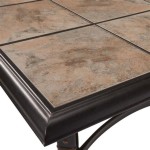Patio Paver Base: Ensuring a Long-Lasting and Beautiful Outdoor Space
A patio paver base is the foundation upon which your patio pavers rest. It is a critical component of any successful patio project, providing stability, drainage, and longevity. Choosing the right base material and ensuring proper installation are crucial for creating a durable and aesthetically pleasing outdoor space. This article will delve into the importance of a patio paver base, exploring the different types of base materials available, and outlining the key steps in its installation.
The Importance of a Patio Paver Base
A patio paver base serves several crucial purposes: *
Stability:
The base provides a solid and even foundation for the pavers, preventing them from shifting or sinking over time. This is especially important in areas with soil that is prone to settling or frost heave. *Drainage:
A properly installed base includes a layer of drainage material, enabling water to escape and prevent water pooling on the patio surface. This helps to protect the pavers from damage caused by moisture and frost. *Leveling:
The base allows for the creation of a level patio surface, ensuring that the pavers are installed at the desired height and create a visually appealing and functional space. *Weed Control:
A properly installed base acts as a barrier against weeds, preventing them from growing up through the pavers. This helps to maintain a clean and attractive patio. *Durability:
A robust base contributes to the overall longevity of the patio by protecting the pavers from damage and extending their lifespan.Types of Patio Paver Base Materials
There are several common materials used for patio paver bases, each with its own advantages and disadvantages: *
Compacted Gravel:
This is one of the most commonly used and affordable materials. Gravel provides good drainage and stability, but requires proper compaction for effectiveness. *Crushed Stone:
Similar to gravel, crushed stone offers excellent drainage and compaction, but it can be more expensive. *Sand:
Sand is often used as a base material for patios in areas with good soil drainage. It is less expensive than gravel or crushed stone but may require additional layers for stability. *Geotextile Fabric:
This fabric is often laid beneath the base material to prevent soil from mixing with the gravel or stone. It also helps to control weed growth and improve drainage. *Concrete:
Concrete is a very durable and stable base material, but can be more expensive to install. It is often used in high-traffic areas or where a very strong base is required.Patio Paver Base Installation
The installation process for a patio paver base typically involves the following steps: *
Site Preparation:
Clear the area of vegetation, debris, and existing structures. Make sure the ground is level and compacted. *Excavation:
Dig out the area to the desired depth for the base, typically 6-8 inches. This will allow for adequate drainage and the desired patio height. *Laying the Geotextile Fabric:
If using geotextile fabric, roll it out over the excavated area, ensuring it covers the entire surface. *Laying the Base Material:
Spread the chosen base material evenly over the geotextile fabric or excavated area. *Compacting the Base:
Use a compactor or a plate tamper to compact the base material thoroughly. This ensures the base is firm and stable. *Installing the Pavers:
Once the base is compacted, lay the pavers according to your desired design, ensuring they are level and flush with each other. *Adding Joint Sand:
After the pavers are laid, fill the gaps between the pavers with joint sand to stabilize the pavers and prevent weed growth.The specific materials and techniques used for a patio paver base may vary depending on local building codes, soil conditions, and the design of the patio. It is strongly recommended to consult with a professional landscaper or contractor to ensure that the base is properly installed and meets all necessary requirements.

How To Prep Lay A Base For Pavers Western Interlock

What Kind Of Base Should You Use For Patio Pavers Installation

What Kind Of Base Should You Use For Patio Pavers Installation

Do S And Don Ts Of Paver Installation Step 2 3 Base Preparation

Paver Patios That Will Save You Time And Effort Family Handyman

Gator Base Alliance

Paverbase 20 04 In X 36 Black Brock Paver Base Panel Pvb5b The Home Depot

What Is The Best Base For Brick Pavers

Brock Paverbase

It S All About The Base Permeable Paving As A Sustainable Solution Nature Perspective Landscaping
Related Posts








